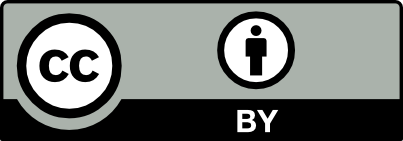2025 - Vol. 8
| Autocrine Semaphorin 6B Signaling Is Essential for Tumorigenesis in Lung Cancer | Vol.8, No.1, p.18-22 |
|---|---|
| Daisuke Yamada , Takuya Hasegawa , Kohichi Kawahara , Takehiko Maeda | |
| Received: January 22, 2025 | |
| Accepted: February 12, 2025 | |
| Released: February 26, 2025 | |
| Abstract | Full Text PDF[2M] |
Semaphorin family belongs to secreted or membrane anchored proteins. Recent studies have demonstrated the involvement of semaphorins and their receptors in cancer biology, but it remains unclear how each semaphorin molecule regulates tumorigenesis. Previously we reported that Semaphorin 3A (Sema3A) and its receptor Plexin A1 (PlxnA1) regulate the malignant phenotypes of mouse-derived lewis lung cancer (LLC) cells constitutively expressing GFP (LLC-GFP). Here we show that Semaphorin 6B (Sema6b) serves as one of the oncogenic semaphorin molecules in lung cancer using LLC-GFP. Sema3a or Plxna1 knockdown downregulated Sema6b, and their suppressive effect on proliferation was significantly recovered by recombinant SEMA6B (rSEMA6B) treatment. Sema6b knockdown suppressed the proliferation and tumorigenicity of LLC-GFP. Interestingly, the self-renewal capacity of LLC-GFP derived cancer stem-like cells (LLC-GFPstem) was completely lost by Sema6b knockdown. These results demonstrate that Sema6B would be the novel therapeutic target of lung cancer.
| Identification of Genes Involved in the Utilization of Hydroxamate Xenosiderophores in Vibrio alginolyticus | Vol.8, No.1, p.9-17 |
|---|---|
| Tomotaka Tanabe , Megumi Hori , Nene Kimura , Ryoji Tadokoro , Kenjiro Nagaoka , Tatsuya Funahashi | |
| Received: October 21, 2024 | |
| Accepted: December 16, 2024 | |
| Released: January 15, 2025 | |
| Abstract | Full Text PDF[2M] |
Iron is an essential nutrient for bacterial survival. Vibrio alginolyticus is a pathogenic Vibrio species that produces vibrioferrin, a cognate siderophore for efficient iron acquisition in iron-limited environments. Many bacteria have developed mechanisms to utilize xenosiderophores produced by other microorganisms, in addition to using self-produced siderophores for iron acquisition. In this study, we found through a homology search using the whole genome sequence of V. alginolyticus NBRC 15630 that this bacterium has genes similar to those involved in the utilization of hydroxamate-based xenosiderophores, desferri-ferrichrome (DFC), desferrioxamine B (DFOB), and aerobactin (AERO), possessed by V. parahaemolyticus, V. cholerae, and V. vulnificus. In growth assays using an iron-limiting medium supplemented with each xenosiderophore, it was found that the N646_3157 (fhuA1), N646_0489 (fhuA2), N646_0777 (desA), and N646_4356 (iutA) are outer membrane receptor genes involved in the utilization of DFC, DFOB, and AERO and N646_3158-3160 (fhuC1D1B1), and N646_0486-0488 (fhuC2D2B2) are ATP-binding cassette transporter genes for both DFC and DFOB. Additionally, we demonstrated by reverse transcriptase-quantitative PCR and electrophoretic mobility shift assay that the fhuC2D2B2A2 genes, which were newly identified in pathogenic Vibrio species, are an operon whose expression is probably regulated by Fur in response to iron availability.
| Analysis of OSW-1-Induced Stress Responses in HT-29 Cells | Vol.8, No.1, p.1-8 |
|---|---|
| Hibiki Nakamura , Yuma Ito , Mahmoud Kandeel , Kaori Sakurai , Kentaro Oh-hashi | |
| Received: September 18, 2024 | |
| Accepted: December 05, 2024 | |
| Released: January 15, 2025 | |
| Abstract | Full Text PDF[8M] |
OSW-1, a promising compound that is toxic to diverse tumor cell lines, is a saponin from Ornithogalum saundersia. In this study, we analyzed the stress responses induced by OSW-1 using the human colon cancer cell line HT-29 cells and compared it with the commonly used ER and Golgi stress inducers brefeldin A (BFA), thapsigargin (Tg), and tunicamycin (Tm). OSW-1 induced few ER stress-related factors, but there was an increase in expression of TFE3 protein, one of the Golgi stress response factors. A shift in the molecular weight of TFE3 was also found, likely attributable to dephosphorylation. Conversely, the impact of OSW-1 on the expression of the TFEB protein, another member of the MiTF/TFE family, was minimal. Cleavage of CREB3, another Golgi stress sensor, was apparently induced only by BFA. LC3-II and p62, autophagy-related factors, were increased in all drug treatments. Unexpectedly, OSBP protein levels, one of the targets of OSW-1, were increased by not only three reagents but also OSW-1. Taken together, OSW-1 treatment of HT-29 cells induced atypical Golgi stress that strongly activated the TFE3 pathway and did not involve the CREB3 pathway or the ER stress response. Although OSW-1 was also found to affect the autophagy system, it was suggested that the effects of OSW-1 may not be mediated by OSBP depletion. These findings will contribute to the development of OSW-1-based cancer therapies and to our understanding of Golgi stress responses.

